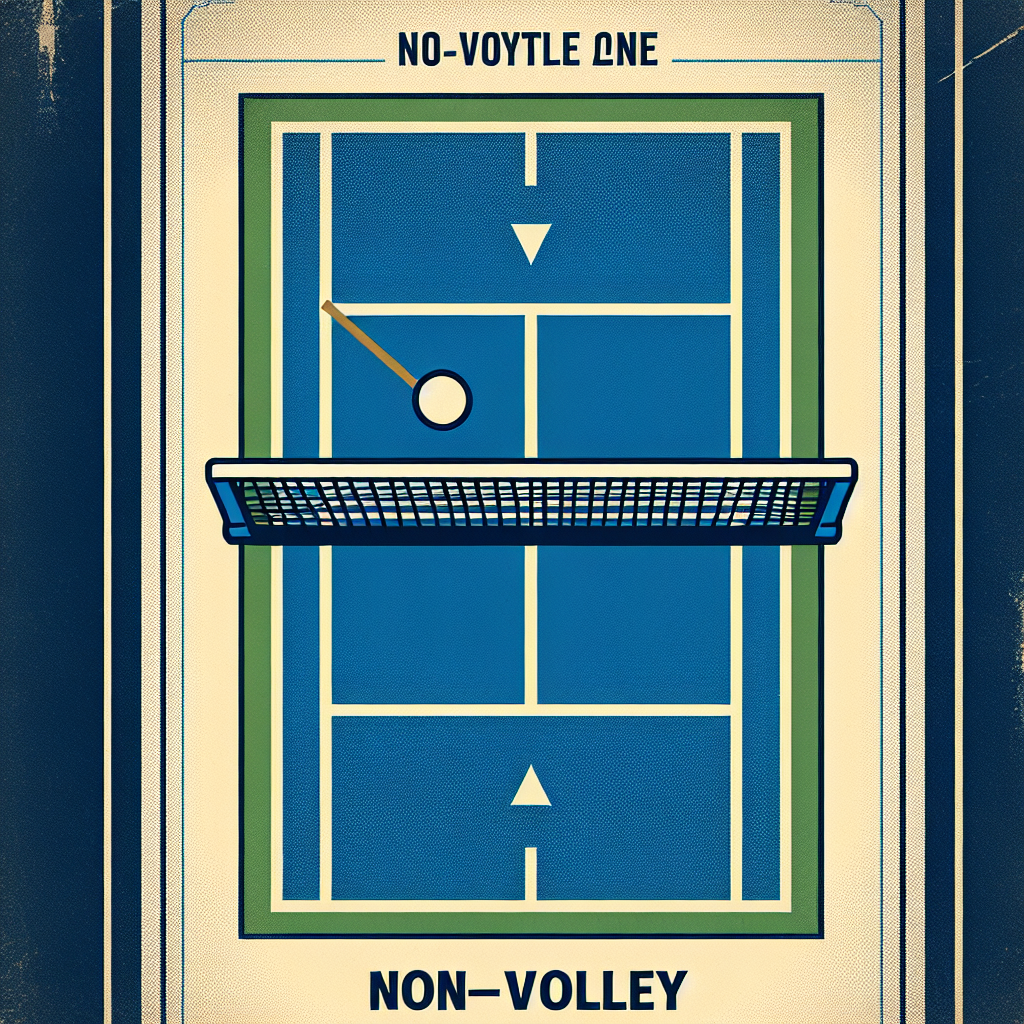Pickleball enthusiasts, have you ever found yourself wondering about the mysterious non-volley zone (NVZ) rule? Well, look no further! In this article, we will demystify the NVZ rule and shed light on its significance in the game of pickleball. Whether you’re a seasoned pickleball player or a curious beginner, you’ll gain a clear understanding of this rule and how it impacts your gameplay. So, let’s jump right in and explore the ins and outs of the non-volley zone rule in pickleball!
What Is The Non-volley Zone (NVZ) Rule In Pickleball?
Pickleball is a popular sport that combines elements of tennis, badminton, and ping pong. It is played on a smaller court, making it accessible to people of all ages and skill levels. One of the key rules in pickleball is the Non-volley Zone (NVZ) rule, also known as the kitchen rule. Understanding this rule is essential to playing the game correctly and having an enjoyable experience on the court.
Definition of the Non-volley Zone (NVZ)
The Non-volley Zone, also referred to as the NVZ or kitchen, is a specific area on the pickleball court where players are not allowed to hit the ball out of the air, or ‘volley’ the ball. The NVZ is a rectangular area that extends 7 feet from the net into the court on both sides. It is marked by a solid line on the ground and is located on each side of the net.
Purpose of the Non-volley Zone (NVZ)
The purpose of the Non-volley Zone (NVZ) rule in pickleball is to promote fair play and prevent players from gaining an unfair advantage by continuously volleying the ball close to the net. This rule encourages players to have a strategic and balanced approach to the game, forcing them to use more groundstrokes and rely on shot placement rather than powerful volleys.
Non-volley Zone (NVZ) Dimensions
The Non-volley Zone (NVZ) is a rectangular area that measures 7 feet from the net into the court on both sides. It extends parallel to the net and is indicated by a solid line on the ground. The NVZ has a width that is equal to the width of the court, typically 20 feet in a standard pickleball court. The 7 feet zone ensures that players must move closer to the net and execute more controlled shots when playing near the NVZ.
Placement of the Non-volley Zone (NVZ)
The Non-volley Zone (NVZ) is symmetrically placed on both sides of the net, dividing the court into two halves. It is positioned in such a way that it is equidistant from the sidelines and equidistant from the centerline. This placement ensures that both teams have equal access to the NVZ and creates a fair and balanced playing environment for all participants.
When the Non-volley Zone (NVZ) Rule Applies
The Non-volley Zone (NVZ) rule comes into play during specific situations in a pickleball game. The rule applies when both the serving team and the receiving team are engaged in a rally. As long as the ball is in play, meaning it has bounced once on each side of the net, both teams are prohibited from volleying the ball while standing in the NVZ. This rule is in effect for all recreational and competitive pickleball matches.
Exceptions to the Non-volley Zone (NVZ) Rule
While the Non-volley Zone (NVZ) rule is a fundamental aspect of pickleball, there are a few exceptions to the rule that players need to be aware of. First, when the ball bounces outside the NVZ, players are allowed to move into the zone and hit the ball out of the air if they are not volleying the ball. Additionally, if the ball is hit into the NVZ by an opponent, players are allowed to hit the ball before it bounces if they are behind the NVZ line.
Penalties for Violating the Non-volley Zone (NVZ) Rule
Violating the Non-volley Zone (NVZ) rule in pickleball results in a fault. If a player volleys the ball while standing in the NVZ or hits the ball before it has bounced, the opposing team is awarded the point. It is essential for players to understand and respect the NVZ rule to avoid penalties and maintain fair play on the court.
Strategies for Playing within the Non-volley Zone (NVZ)
Playing within the Non-volley Zone (NVZ) requires a strategic approach and specific techniques to maximize effectiveness while still adhering to the rule. One effective strategy is the ‘third shot drop,’ where players purposely hit a soft shot that lands safely in the opponents’ NVZ. This strategy allows players to move forward into a better position on the court while reducing the risk of violation. Another key strategy is practicing precise footwork and body positioning to ensure players avoid stepping into the NVZ unintentionally.
Conclusion
The Non-volley Zone (NVZ) rule plays a significant role in maintaining fairness and balance in the game of pickleball. By restricting players’ ability to volley the ball in the NVZ, the rule promotes strategic shot placement and ensures an enjoyable experience for all participants. Understanding the dimensions, placement, and exceptions of the NVZ, as well as the penalties for violating the rule, is crucial for any pickleball player. With effective strategies and a strong foundation of knowledge, players can navigate the NVZ with confidence and enhance their overall gameplay. So next time you step onto the pickleball court, remember the importance of the Non-volley Zone rule and enjoy a fair and competitive game with your fellow players. Happy playing!

